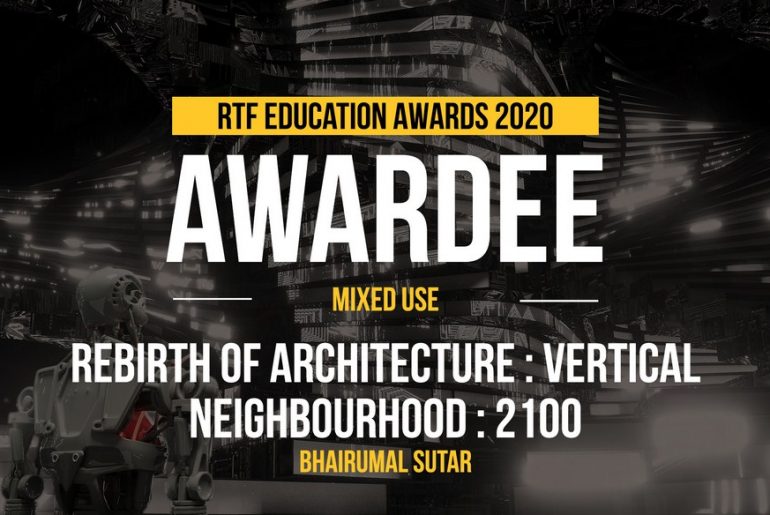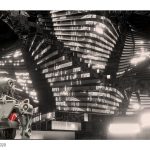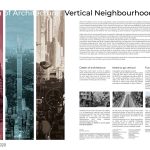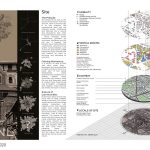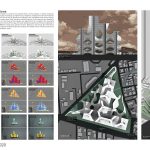The world’s cities are facing rapid change. The number of megacities with 10 million people or more will double to 41 by 2030. By this stage, over 70% of the earth’s population will be urbanised, bringing unprecedented challenges to delivering sustainable housing, work, education and health for everyone.
RTF Educational Awards 2020
Second Award | Mixed-Use
Project Name: Rebirth of Architecture: Vertical Neighbourhood: 2100
Student Name: Bhairumal Sutar
University Name: SMEF’s Brick School of Architecture, Pune university
Area: 1,18,000 sq.m. Site Area
Year: 2019
Location: Shivaji Nagar, Pune, Maharashtra, India
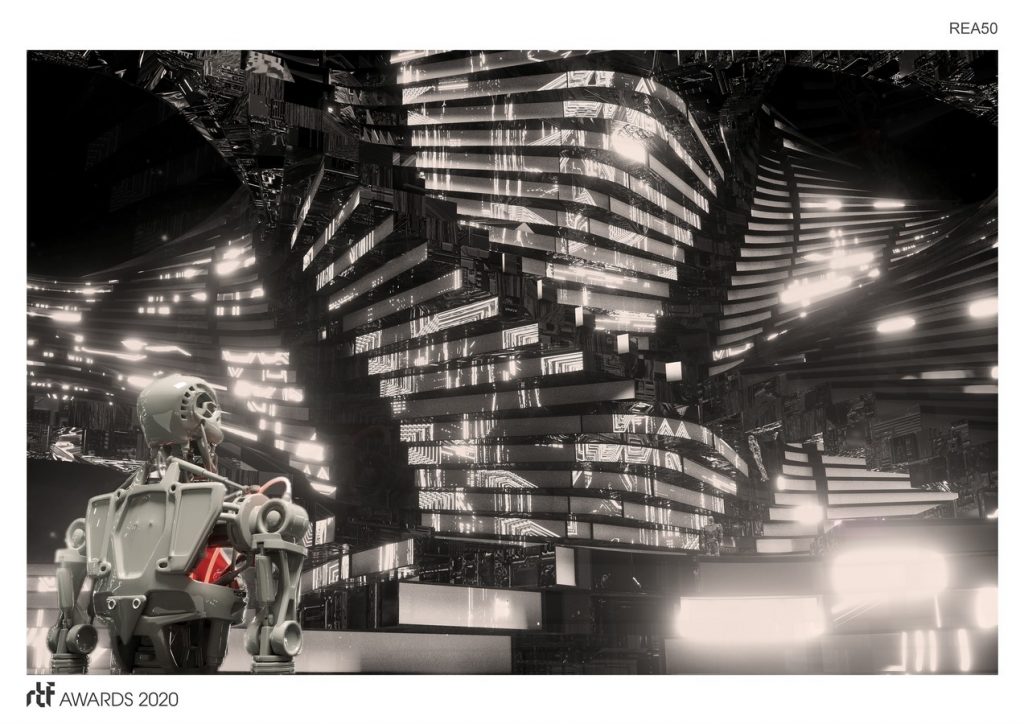
With the Human population set on a steep upward trajectory, less of available land and resources Cities are responding by becoming denser, more vertical places. Just a decade ago, tall buildings above 200 metres were a rarity, but at the end of 2016, there were 228 globally. Building higher and higher seems likely to be the only solution at our disposal to combat this rising issue of housing for the increasing number of humans.
The concept of a vertical neighbourhood is presented as an important architectural solution to ease the pressure of urban development in the city. There are many reasons for Vertical Neighbourhoods: traffic congestion affecting commuting time, the rapid growth of population density, the rise of rental housing and workplace due to the scarcity of residential and commercial area in high-density cities, and the impact of technology on employment. Vertical Neighbourhood fundamentally took its form from a living space used as a home, a base for business and other purposes. The Vertical Neighbourhood has been contributed as an important principle in urban planning paradigms such as New Urbanism and Transit-oriented development. Due to the of construction technology that the buildings can be constructed in a greater number of floors, as well as higher floor spans, the mixed-use development was able to extend the functionality in the vertical dimension.
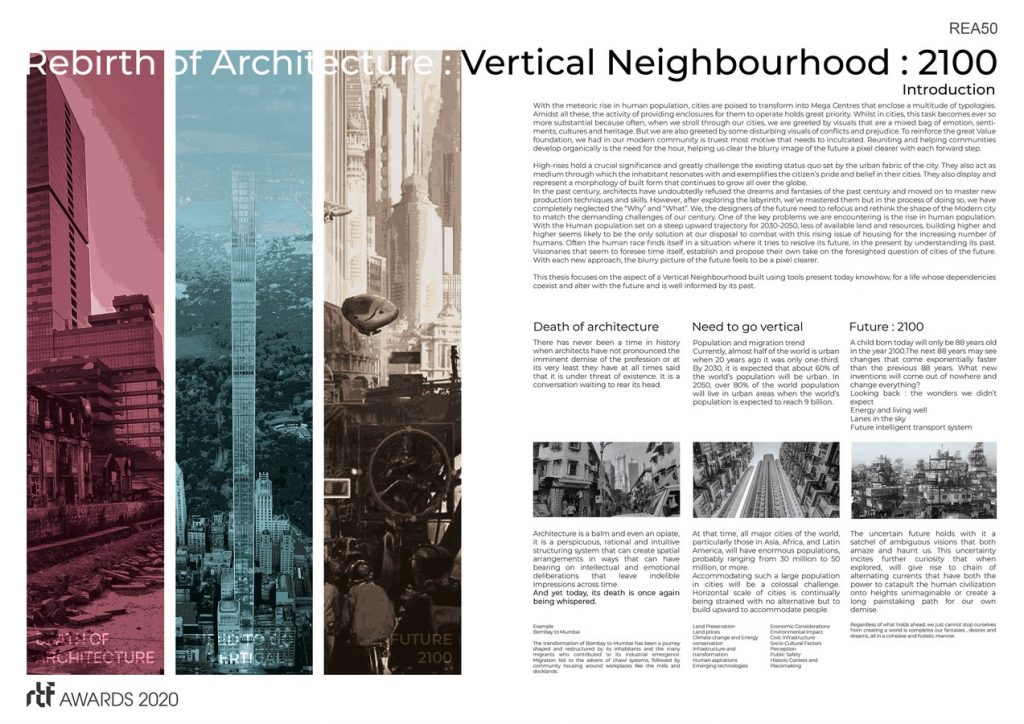
The concept of Vertical Neighbourhood can be used as a tool to rejuvenate the city as it creates different activities on different floors at different times, giving continued life to the city. It consists of mixing uses of shops, offices, and apartments for the diversity of users of ages, income levels, cultures, and races in the community within neighbourhoods, within blocks and within buildings. This concept can be used to create high-quality comfortable public and private spaces by an emphasis on the beauty and aesthetics of the buildings that creates a sense of place within the community.

The emerging consensus is that development is more sustainable if it produces a mixture of uses. Segregation of land uses, encouraged in the past, is not relevant now. The trend back to mixed usage brings a number of potential benefits. It ensures vitality through activity and diversity. It areas are safer. It also reduces the need to travel, making people less reliant on cars, bringing welcome environmental benefits. Diversity of uses adds to the vitality and interest of town centres

This thesis focuses on the aspect of a Vertical Neighbourhood built using tools present today knowhow, for a life whose dependencies coexist and alter with the future and is well informed by its past.
ARCHITECTURE, CONSTRUCTION & DESIGN AWARDS 2020 IS HERE
Over more than half a decade Rethinking the Future has been a leading organization committed to providing an international platform to not only recognize and acknowledge design talents from all over the world but also to celebrate and share the knowledge that created through a plethora of awards, events and academic dialogues in the field of architecture and design.

